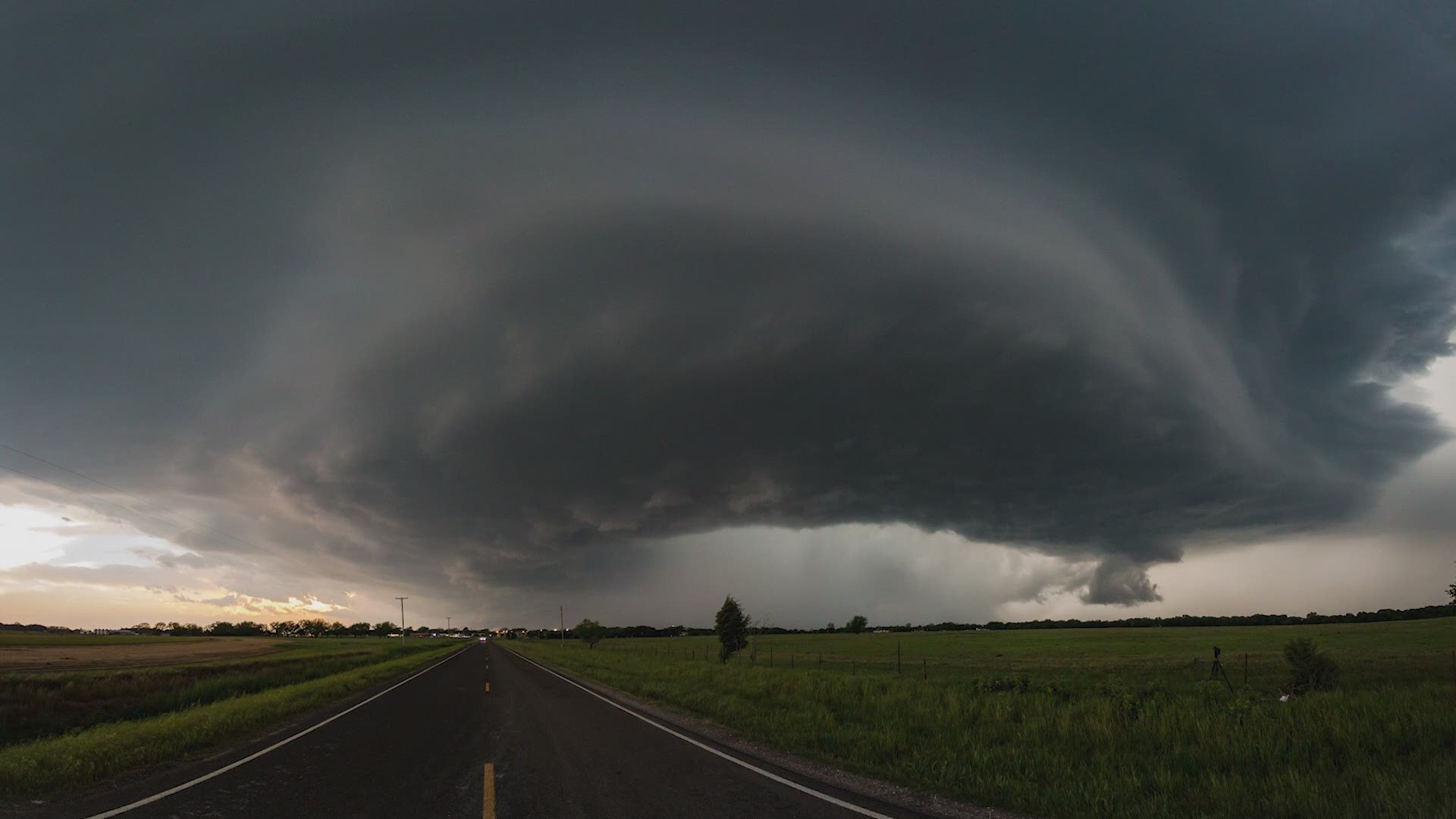DALLAS — We’ve had an active start to the severe weather season both here in North Texas and throughout tornado alley!
In fact, things are even more active than we're used to seeing at this time of the year.
As of the first week of April, the United States is currently seeing above 75th percentile tornado numbers.

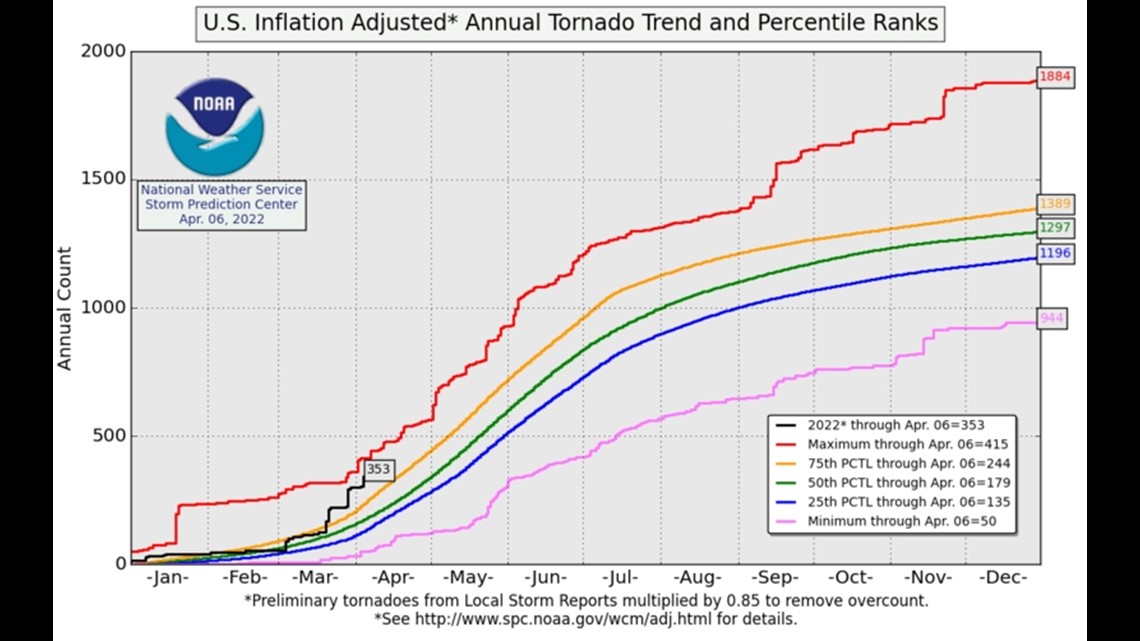
As for North Texas? Well, this March had the most tornadoes on record.
And we’ve already had six reported tornadoes this April!

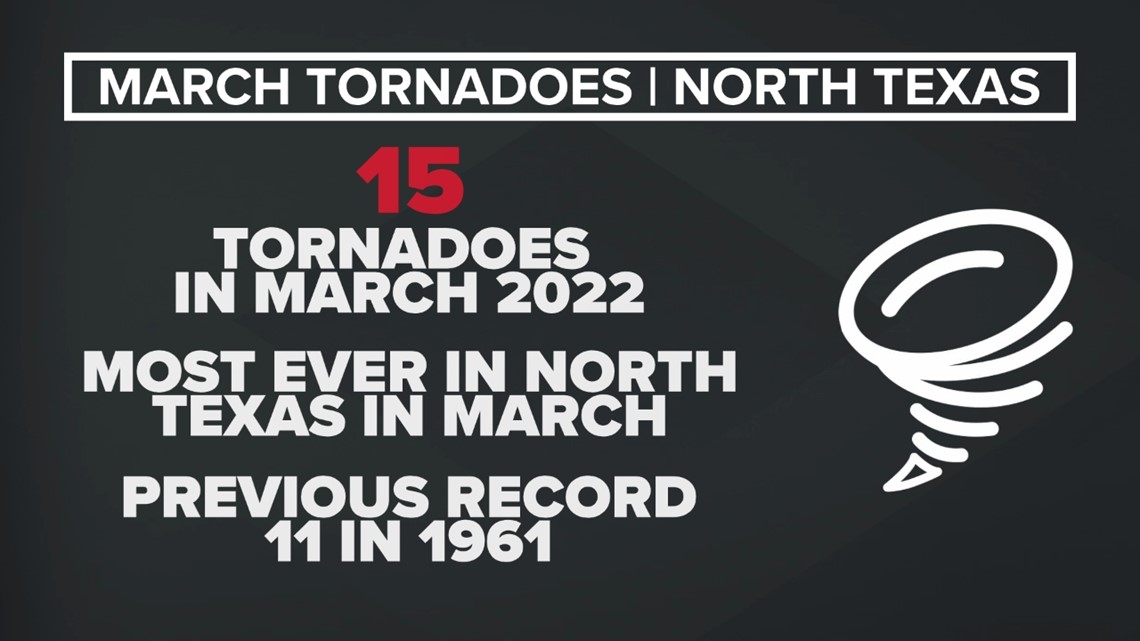
So what's up with that?
Well, for one thing, it's part of living in Texas...
Severe weather is just the way of life here in North Texas.
We expect it in the spring, but it’s always possible at any time of the year.
As for tornadoes, specifically? Well, here's a look at the total number of recorded tornadoes in North Texas for every month from 1880 to 2021.
You can really see that severe weather spike in the spring.

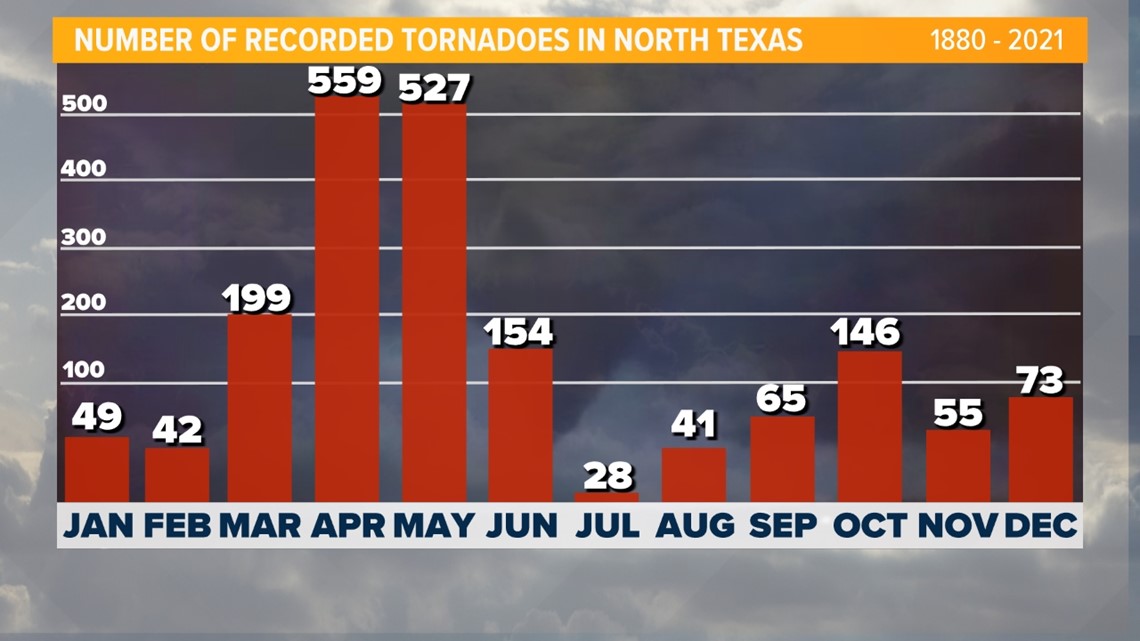
But why do tornadoes tend to happen late in the afternoon and deep into evening? Why not during the day?
One question that we receive quite often is, "Why do the severe thunderstorms always seem to hit late in the day?"
It's true that, at least the majority of the time, severe weather will hit later on in the day -- and, many times, lingering into the overnight.
Is there a reason for this? Why, for instance, don’t severe thunderstorms usually strike in the morning?
The answer here is actually quite simple: Storms like these need the warmth of the day to fuel themselves.
Let’s dive into a little bit of the science.
In short, storms need instability to become truly severe
Think of the big storm systems that bring severe weather as an engine.
The cold front, the dryline, the warm front, the center of low pressure -- these elements all work together to help create rain and thunderstorms.
But what good is that engine without fuel? That’s where the heat of the day comes into play.
Thunderstorms need warm and humid air -- think of it as fuel -- to thrive.

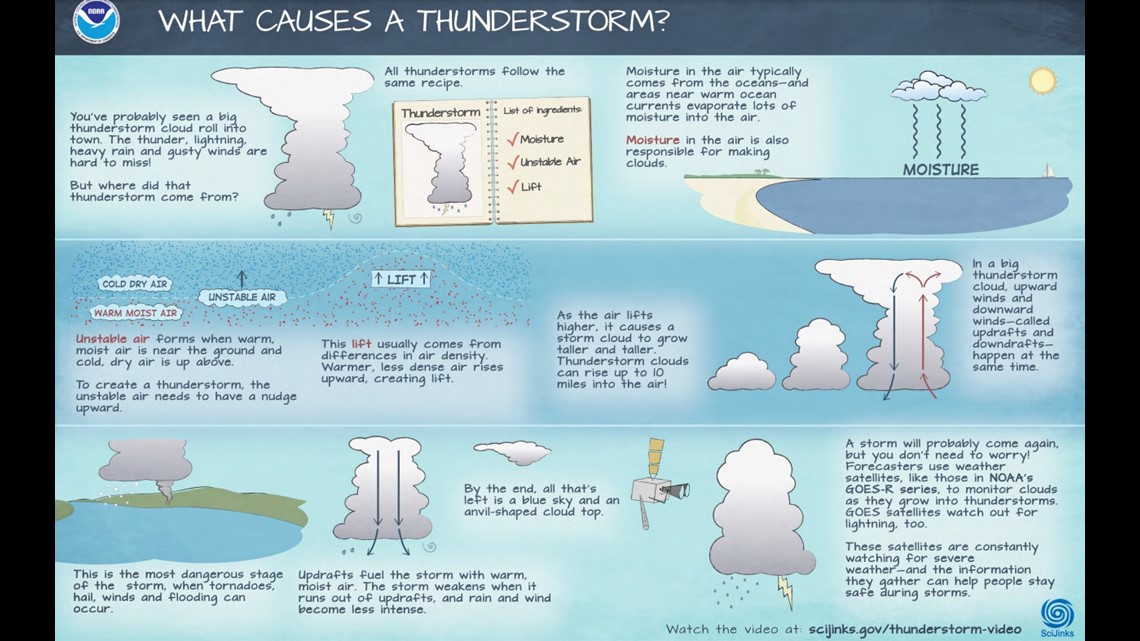
When the sun comes up in the morning, we're typically at our coolest time of the day.
As we enter the late morning and into the afternoon, the land surface continues to heat up, and this daily warming helps build instability -- and, importantly, the necessary lift needed for the development for thunderstorms.
Remember: Warm air rises!
One thing you probably do remember from science class is that warm air rises. That's an important factor here.
As the air is warmed throughout the day, it becomes a lot more buoyant and is able to rapidly lift up into the atmosphere, where the air is cooler and drier.
This intermingling of warm and cool air then creates instability. Just as important, the rising air brings up the moisture needed for thunderstorms and severe weather to form.
Another factor at play? The Nocturnal Low Level Jet
OK, now here's where the geography of North Texas and the plains come into play.
One thing that enhances the severe weather risk in the evening -- and just throughout these parts in general -- is how the air aloft in the plains remains warm in the evening.
Just to our west, meanwhile, the air at the same elevation in the Rocky Mountains cools more quickly.
This thermal gradient creates -- the cool air blending into the warmer air as it travels west to east -- enhances wind speeds, and can increase wind shear in the plains.
And that higher wind shear? Yes, it too can amp up severe weather potential.
So what does this all mean?
Oh, you mean, beyond the fact that science is just super cool?
Mostly it means that you're not crazy to notice that a lot of these storms happen at the end of the day. There are, in fact, a few reasons why this happens.
And, next time you're shaking your fist at the sky and cursing out Mother Nature for ruining your night's sleep, you won't also have to ask her why she always does this to you.
Rather, you'll just know!

